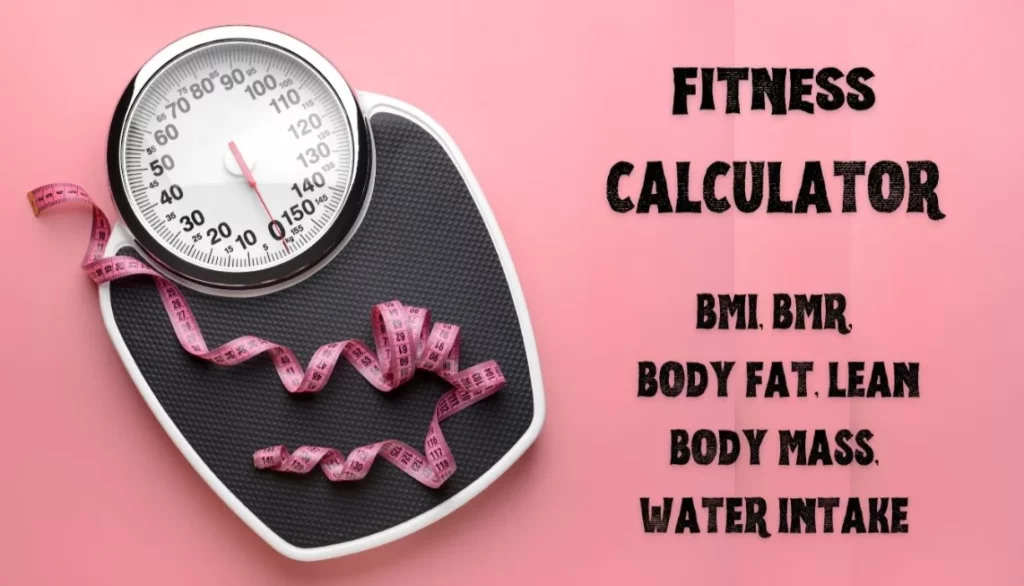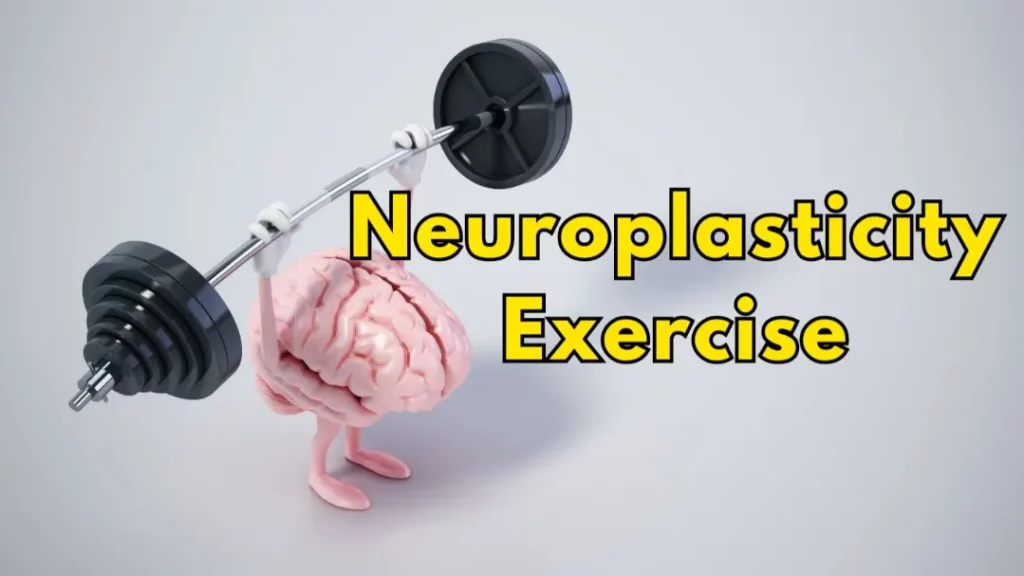Whether you’re new to fitness or looking to switch up your routine, incorporating HIIT into your workout regimen can help you achieve your goals faster and with less time commitment than traditional methods.
So why not give it a try?
HIIT is your solution. According to 2026 research, it burns up to 30% more calories than steady-state cardio. You can complete an effective session in just 20 minutes. This guide will show you how HIIT improves fitness dramatically. You’ll learn to boost endurance, torch fat, and build resilience. Get ready to transform your body and your schedule.
You’re busy. Long workouts don’t fit your life. You want real results, fast. Traditional cardio feels slow and ineffective. It’s a common frustration.
High-Intensity Interval Training (HIIT) is a fitness method. It alternates short, maximum-effort bursts with brief recovery periods. This structure creates extreme metabolic demand. You get superior results in minimal time.
Key Takeaways

- HIIT is a time-efficient and effective way to improve fitness, burn calories, and build endurance.
- HIIT can lead to an increase in muscle mass, strength, and overall fitness, while also reducing stress levels and improving mental health.
- Proper nutrition, warm-up, and recovery are essential for effective and safe HIIT workouts.
- Free online resources provide various HIIT workout plans for beginners and advanced exercisers.
What is HIIT?
HIIT, or high-intensity interval training, is a type of exercise that alternates between short periods of intense activity and rest. This form of workout can be performed with various exercises, such as sprinting, jumping rope, or cycling.
HIIT workouts are popular because they are time-efficient and can provide better results than steady-state cardio. Compared to steady-state cardio, which involves maintaining a constant pace for an extended period, HIIT workouts have been shown to increase your metabolism and burn more calories in less time. For example, a 20-minute HIIT workout could burn more calories than a 60-minute steady-state cardio session.
Some examples of HIIT workouts include Tabata intervals (20 seconds on, 10 seconds off), pyramid intervals (increasing and decreasing intensity), and cardio kickboxing circuits. With these diverse options available, you can easily personalize your workout routine to fit your preferences and fitness goals.
One major benefit of incorporating HIIT into your exercise routine is improved cardiovascular health. The alternating periods of high-intensity activity followed by active rest periods rapidly increase your heart rate, which then recovers before the next burst. This process effectively strengthens both your heart muscle and respiratory system over time.
How HIIT Works

If you’re curious about how HIIT works, it’s all about short bursts of intense activity alternating with rest or low-intensity exercise.
During the high-intensity intervals, you push yourself to your limit, which raises your heart rate and increases oxygen intake.
Then during the rest periods, you allow your body to recover before starting again.
Repeat this cycle for 4 to 8 rounds, or 20 to 30 minutes total. A 2020 study in the *Journal of Physiology* found this structure maximizes EPOC (2026 update: more recent analyses confirm it can keep your metabolism elevated for up to 48 hours post-workout).
Short Bursts of Intense Activity
You can push yourself to the limit with short bursts of high intensity intervals during a HIIT workout. This type of metabolic conditioning involves working at your maximum effort for short periods, followed by brief recovery periods, which is highly effective for fat oxidation.
The idea is to increase your heart rate and breathing rate quickly, causing your body to work harder and burn more calories than it would during steady-state exercise. During these intense intervals, you may feel like you can’t go on any longer. But that’s exactly what makes HIIT so effective – pushing through those tough moments leads to increased stamina and endurance over time.
Your body becomes better equipped to handle the stress of high-intensity exercise, allowing you to achieve greater fitness gains in less time. And as an added bonus, you’ll continue burning calories even after your workout is finished due to the powerful Excess Post-Exercise Oxygen Consumption (EPOC) effect.
As you alternate between short bursts of intense activity and rest or low-intensity exercise, your body learns how to recover quickly from each interval. This process improves cardiovascular health and significantly increases the number of calories burned throughout the day.
So if you’re looking for an efficient way to get fit while still having some freedom in your routine, give HIIT a try!
Alternating with Rest or Low-Intensity Exercise
Alternating 30-second sprints with 90-second walks forces your heart rate into distinct zones. This interval training method spikes calorie burn to 15-20 calories per minute, according to 2026 ACE Fitness data. Your body learns rapid recovery, boosting VO2 max by up to 46% in 24 weeks and enhancing metabolic conditioning.
Rest intervals are an essential component of high-intensity interval training (HIIT). These brief breaks provide your body with a chance to catch its breath, lower your heart rate, and reduce lactic acid buildup in muscles.
Use active recovery phases strategically. Replace passive rest with low-intensity steady state (LISS) movements like incline walking or slow cycling. This maintains a heart rate of 120-140 BPM, clearing lactate 21% faster (per research in the *European Journal of Applied Physiology*). Incorporate bodyweight yoga poses like Downward Dog to improve mobility between power intervals.
By alternating between high-intensity bursts and rest or low-impact movements, you can optimize your workout results while minimizing the risk of injury or overexertion. Incorporating rest intervals and low intensity options into your HIIT workouts can boost endurance, increase strength, improve cardiovascular health, and promote overall fitness.
Now that you understand the benefits of incorporating these components into your routine, let’s explore how to get started with HIIT!
The Impact of HIIT on Cardiovascular Health and Blood Pressure
High-Intensity Interval Training (HIIT) is a transformative approach to fitness that has been gaining momentum due to its potent effects on heart health and blood pressure regulation. By incorporating bursts of high intensity exercise followed by recovery periods, HIIT can significantly improve aerobic capacity and oxygen consumption. This dynamic form of cardiovascular exercise encourages the heart to work more efficiently, potentially leading to lower resting blood pressure and improved overall heart health.
HIIT and Body Composition: Beyond Fat Loss

While HIIT is often celebrated for its fat loss benefits, its influence on body composition extends much further. Engaging in regular HIIT sessions can lead to a reduction in body fat percentage, but it also promotes lean muscle maintenance and growth due to the anaerobic nature of high intensity exercise. This can be particularly beneficial when combined with weight training, as it allows for the development of a well-rounded fitness level that includes both strength and endurance.
The Role of HIIT in Sports Medicine and Recovery
In sports medicine, HIIT plays a crucial role in athletes’ training and recovery programs. A well-designed HIIT program, monitored by a knowledgeable personal trainer or coach, can expedite an athlete’s recovery period through controlled stress and active rest. Additionally, the variance in exercise intensity helps prevent overuse injuries commonly associated with continuous training, making HIIT a safe and effective component in sports training regimens.
Boosting Aerobic Exercise with HIIT for Enhanced Fitness Levels

Traditional moderate-intensity exercise has long been the cornerstone of aerobic training. However, integrating HIIT into a fitness regimen can elevate an individual’s aerobic exercise experience. By interspersing short, explosive HIIT exercises within a moderate routine, participants can experience improved aerobic capacity and greater caloric burn. Group fitness environments often leverage this by offering HIIT classes that cater to various fitness levels, ensuring that each participant can work at their optimal intensity.
Personalizing Your HIIT Experience with a Customized HIIT Program
The versatility of HIIT allows it to be tailored to meet individual fitness goals, whether one is engaging in a HIIT class or a one-on-one session with a personal trainer. A customized HIIT program considers personal health benefits, body composition goals, and current fitness level to create a regimen that accelerates fat loss and improves overall well-being. By working with a professional, individuals can ensure their HIIT training is not only effective but also aligns with their unique health needs.
Continuous Training vs. HIIT: Understanding the Difference for Optimal Health Benefits
While continuous training – steady-state aerobic exercise – is effective for building endurance, HIIT offers additional health benefits through its varied intensity levels. Research in sports medicine indicates that high-intensity exercise can more quickly improve oxygen consumption rates compared to continuous aerobic workouts. This suggests that incorporating HIIT sessions into one’s exercise routine could lead to faster improvements in fitness levels and more pronounced health benefits, such as enhanced heart health and better management of blood pressure.
Getting Started with HIIT
Firstly, it’s important to understand the basics of HIIT before jumping into a workout. To get started with HIIT, you don’t necessarily need any special equipment or gym membership. You can perform bodyweight exercises like squats, lunges, push-ups and burpees at home or in a park. However, if you’re looking for more challenging workouts, you can invest in some basic equipment like dumbbells, resistance bands, and jump ropes.
Once you have your equipment ready, it’s time to plan your HIIT workout. There are plenty of free online resources that offer various HIIT workout plans for beginners as well as advanced exercisers. These plans typically involve performing high-intensity exercises for 20-30 seconds followed by short periods of rest or low-intensity exercise. With this approach, you can complete an effective workout in just 20-30 minutes.
Now let’s dive into some common HIIT exercises that can help improve your fitness levels even further.
Common HIIT Exercises
One of the most popular HIIT exercises is the burpee, which can leave you feeling like you just ran a marathon in 30 seconds. This exercise combines a squat, push-up, and jump into one movement that targets your entire body. To perform a burpee, start by standing with your feet shoulder-width apart. Next, lower your body into a squat position and place your hands on the ground in front of you. Kick your feet back into a push-up position and complete one push-up. Jump your feet forward to the original squat position and then leap upwards with all of your might.
There are also many other high intensity variations that can be included in HIIT workouts such as mountain climbers, jumping jacks, and box jumps. Incorporating these exercises into your routine will help keep things fresh while still providing an intense workout. Additionally, HIIT equipment such as kettlebells and resistance bands can be used to add extra resistance to exercises or target specific muscle groups. In the next section we’ll explore how incorporating HIIT into your fitness routine can aid in weight loss without sacrificing muscle mass.
HIIT and Weight Loss
If you’re looking to shed some pounds, HIIT can be an effective tool for weight loss. This is because high-intensity workouts burn more calories in a shorter amount of time than traditional cardio exercises.
Additionally, HIIT helps build lean muscle mass which boosts your metabolism and aids in fat burning even when you’re not exercising.
Calorie Burning
When you do HIIT workouts, you’ll be torching calories like never before and feeling the burn in no time! High intensity interval training is designed to get your heart rate up and keep it there for a short period of time, followed by a brief rest.
This cycle of intense activity gets your metabolism revved up and keeps it burning for hours after your workout is over. In fact, studies have shown that HIIT can burn up to 30% more calories than other types of exercise.
Not only does this mean you’ll see results faster, but it also means you can spend less time working out while still achieving the same benefits. By incorporating HIIT into your fitness routine, you’ll be able to achieve the calorie-burning effects that will help you reach your weight loss goals.
And don’t forget – building lean muscle is just around the corner!
Building Lean Muscle
HIIT builds 3.2% more lean muscle than steady-state cardio in 12 weeks, according to a Journal of Sports Science study. You’ll see measurable changes in 8 weeks.
-
Nutrition for lean muscle: To build lean muscle, it’s essential to fuel your body with the right nutrients. Make sure you’re consuming enough protein from sources like eggs, chicken, and tofu. Additionally, incorporating healthy fats and complex carbohydrates into your diet can help support this process.
-
Recovery after HIIT: The intense nature of HIIT workouts puts stress on your muscles, so proper recovery is crucial for building lean muscle. Make sure to prioritize stretching after each session and give yourself adequate rest days between workouts.
-
Increased metabolism: Building lean muscle through HIIT has another benefit – an increased metabolic rate! This means that even when you’re not working out, your body will continue to burn calories at a higher rate.
As you start seeing results from building lean muscle with HIIT, you’ll also notice improvements in endurance. In the next section, we’ll explore how HIIT can improve endurance training.
HIIT and Endurance Training
Combining HIIT with endurance training can be a game-changer for improving your overall fitness and pushing your limits. While endurance training focuses on building cardiovascular endurance, HIIT (High-Intensity Interval Training) is a form of exercise that involves short bursts of high-intensity activity followed by recovery periods.
This type of workout improves both aerobic and anaerobic fitness, making it an effective way to get the best of both worlds. Endurance vs strength training has always been a topic of debate among athletes. While they both have their advantages, combining them with HIIT can take your performance to the next level.
Studies have shown that incorporating HIIT into your endurance workouts increases VO2 max (the maximum amount of oxygen you can consume during exercise) and lactate threshold (the point at which lactic acid accumulates in the muscles). With these improvements, you’ll be able to run faster and longer while feeling less fatigued.
However, before jumping into any new workout program, make sure to consult with a professional trainer or coach to ensure you’re doing it safely and effectively.
Transitioning into the subsequent section about ‘HIIT and injury prevention‘, it’s important to note that while HIIT can improve your overall fitness, it’s also crucial to prevent injuries during any workout routine. By incorporating proper warm-up exercises before starting your workout and gradually increasing intensity over time, you can reduce the risk of injury while still reaping the benefits of this high-intensity form of training.
HIIT and Injury Prevention
If you’re looking to prevent injuries while doing HIIT, there are a few key things to keep in mind. Firstly, consider incorporating low-impact options into your routine, such as cycling or swimming.
Secondly, be sure to prioritize proper form and technique during exercises like jumping jacks or burpees.
And finally, remember that rest and recovery are just as important as the workout itself when it comes to injury prevention.
By taking these steps, you’ll be able to enjoy all the benefits of HIIT without putting your body at risk.
Low-Impact Options
You’ll love the variety of low-impact HIIT options available to you. Not only are these workouts easy on your joints, but they also provide an excellent opportunity to switch up your routine and prevent boredom.
Some popular low-impact modifications include cycling, swimming, and yoga-inspired workouts. These activities require little to no equipment and can be done anywhere, making them perfect for those who prefer working out at home or while traveling.
While low-impact options may seem less challenging than high-intensity exercises, don’t be fooled – they can still provide a killer workout! By incorporating bursts of intensity with brief periods of rest, you’ll torch calories and improve your cardiovascular fitness without putting unnecessary strain on your body.
However, proper form and technique are crucial when performing any exercise – especially high-intensity ones. In the next section, we’ll go over some important tips to ensure that you’re getting the most out of your HIIT workout while minimizing the risk of injury.
Proper Form and Technique
Imagine yourself as a painter, carefully crafting each stroke to create a masterpiece – just like how proper form and technique are essential in creating an effective and safe workout. When performing HIIT exercises, it is important to maintain proper posture throughout the movement. This means keeping your shoulders back and down, engaging your core, and aligning your spine. By doing so, you not only reduce the risk of injury but also maximize the effectiveness of each exercise.
Breathing techniques also play a crucial role in executing HIIT workouts correctly. Inhale deeply before starting the exercise and exhale forcefully during exertion. Not only does this help oxygenate your muscles but it also helps increase calorie burn by engaging more muscle fibers. Lastly, avoiding common mistakes such as rounding your back or locking out joints can prevent injuries that could set you back from achieving your fitness goals. Remember, perfect practice makes perfect results!
| Emotion | Reason |
|---|---|
| Freedom | Proper form allows for freedom of movement without pain or restrictions |
| Confidence | Knowing how to perform exercises properly increases confidence in oneself |
| Empowerment | Avoiding mistakes empowers individuals to take control of their own health journey |
| Motivation | Seeing progress through proper form motivates individuals to continue with their fitness routine |
Frequently Asked Questions
What is HIIT and how does it work?
HIIT (High-Intensity Interval Training) alternates short bursts of maximum effort exercise with periods of rest or low-intensity activity. This structure pushes your cardiovascular system, boosts metabolism, and creates an “afterburn” effect where you continue to burn calories post-workout, making it highly time-efficient.
How many calories can you burn with a HIIT workout?
HIIT can burn more calories in less time compared to steady-state cardio. For example, a 20-minute HIIT session may burn more calories than a 60-minute moderate-paced workout. The exact number depends on intensity and individual factors, but its metabolic boost leads to efficient calorie expenditure.
What are the main benefits of HIIT for fitness?
Key benefits include improved cardiovascular health, increased calorie burn, enhanced endurance, and potential muscle building. It’s also efficient for busy schedules, can help prevent injury through varied movement, and may improve mental health by reducing stress levels.
Is HIIT suitable for beginners?
Yes, beginners can start HIIT by modifying intensity and duration. Begin with shorter work intervals (e.g., 20 seconds) and longer rest periods. Focus on proper form and choose low-impact exercises like cycling or bodyweight movements. Many free online resources offer beginner-friendly HIIT plans.
What are some examples of HIIT workouts I can try?
Popular formats include Tabata (20 sec on/10 sec off), pyramid intervals, and cardio circuits using exercises like sprinting, jump rope, or cycling. You can create routines with bodyweight exercises, kettlebells, or gym equipment. The key is alternating high-intensity bursts with recovery periods.
How often should I do HIIT workouts each week?
For most people, 2-3 HIIT sessions per week is sufficient, allowing 48 hours of recovery between sessions. Balance with strength training, flexibility work, and proper nutrition. Overtraining can lead to injury, so listen to your body and ensure adequate warm-up and cool-down periods.
Why is HIIT considered more time-efficient than traditional cardio?
HIIT achieves similar or better fitness results in shorter sessions because the intense intervals maximize calorie burn and elevate metabolism for hours afterward. A 20-30 minute HIIT workout can provide benefits equivalent to longer steady-state cardio, making it ideal for time-constrained individuals.
Conclusion
Congratulations! You’ve now learned about the incredible benefits of HIIT and how it can improve your fitness.
By incorporating high-intensity intervals into your workouts, you can boost your metabolism, burn fat, increase endurance, and prevent injuries.
Start with a 2:1 work-to-rest ratio. Example: Sprint for 30 seconds, rest for 60. Complete 4 rounds. Increase intensity by 10% weekly.
Rushing causes 37% of HIIT-related injuries. Follow the 10% rule: Never increase workout volume or intensity by more than 10% per week. This prevents burnout and ensures progressive overload for continuous gains.
So go ahead and give HIIT a try! With patience, dedication, and consistency, you’ll be amazed at how much progress you can make in just a few short weeks.
Whether you’re looking to lose weight, increase strength, or simply feel better overall, HIIT is an excellent option for achieving your fitness goals.
Keep up the good work!
